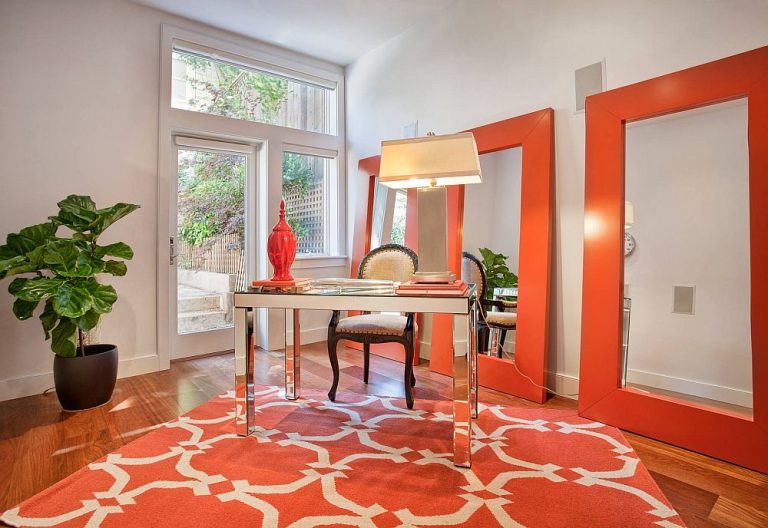The 10 Best Black Succulents That Are Absolutely Gorgeous
Black succulents are fascinating for their dark, or practically black, foliage. These unusual succulents bring elegance and mystery to any garden or indoor plant collection due to their dramatic and mysterious appearance. These succulents have rich, dark colors of green, red, purple, or brown that sometimes appear practically black. Anthocyanins and other pigments defend this colour against harsh sunlight and other environmental influences.
Echeveria ‘Black Prince,’ Aeonium ‘Zwartkop’ (Black Rose), Haworthia ‘Black Gem,’ and Aloe ‘Black Gem’ are popular black succulents. Succulent lovers have several options with these rosettes and tree-like plants. Black succulents are attractive, hardy, and low-maintenance. Because their fleshy leaves store water, they thrive in dry regions and indoors, like other succulents. Well-draining soil, sunlight, and occasional watering are needed for proper upkeep.
As yard focal pieces, indoor potted plants, or imaginative succulent arrangements, black succulents draw attention and lend refinement to any room. Their interesting coloration and ease of maintenance make them a great choice for novice and seasoned plant enthusiasts looking to grow a distinctive and beautiful collection.
1: Echeveria ‘Black Prince

Echeveria ‘Black Prince’ is a popular succulent with dark, almost black foliage and a lovely rosette shape. Key details of this intriguing succulent:
Plant lovers and collectors appreciate Echeveria ‘Black Prince,’ a mystery succulent. This succulent is known for its stunning, almost black rosette leaves. It is popular for gardens, succulent arrangements, and indoor plant collections due to its unusual appearance and little upkeep. This introduction will discuss Echeveria ‘Black Prince”s unique traits and care needs, making it a remarkable addition to any green space.
2: Aeonium ‘Zwartkop’ (Black Rose)

Aeonium ‘Zwartkop,’ or Black Rose, is a stunning succulent and horticultural gem. Its beautiful appearance has made it famous among succulent aficionados and skilled gardeners. This succulent’s almost-ebony leaf rosette is striking. Aeonium ‘Zwartkop’ adds fascination to green spaces. Black Rose foliage always stands out. Rich, dark, almost black leaves define this succulent. This dramatic and stunning contrast makes Aeonium ‘Zwartkop’ stand out in most gardens and collections’ vibrant green backdrops.
Aeonium ‘Zwartkop’ is a beautiful, low-maintenance succulent that beginners and experts may grow. Hardiness and adaptability make it popular.
Growing and caring for this lovely succulent requires a few fundamental guidelines. First, the plant needs sunlight to stay healthy and colorful. ‘Zwartkop’ thrives in partial to full sun or near a sunny window. Well-draining succulent or cactus potting mix is best. This soil structure reduces root rot and other moisture issues by preventing water gathering around roots.
Avoid overwatering and allow soil dry between waterings. Increase watering slightly in spring and summer during rapid development. Winter irrigation should be lowered to avoid overhydration.
The Black Rose, Aeonium ‘Zwartkop,’ is a gorgeous and easy-to-grow succulent. ‘Zwartkop’ will stand out in your yard, container, or interior plant collection. Its dark beauty adds elegance and enchantment to any setting, making it a captivating choice for both experienced horticulturists and plant enthusiasts.
3: Haworthia ‘Black Gem

Haworthia ‘Black Gem’ is a stunning succulent with a black look. Succulent aficionados and collectors love this plant for its spectacular, near-black foliage and low upkeep. This description will include Haworthia ‘Black Gem”s unique traits and care instructions, making it an outstanding addition to gardens, pots, and indoor plant collections. Haworthia ‘Black Gem’ is named for its lustrous, almost black foliage. These large, meaty, rosette-shaped leaves make the plant stand out wherever it’s presented. The dark color of ‘Black Gem’ stands out against other succulents and greenery, making it a popular choice for adding elegance and mystery to plant collections. The ease of care of Haworthia ‘Black Gem’ is appealing. This succulent requires little care, making it perfect for beginners and experts.
Here are some care instructions for its health:
- Sunlight: Give ‘Black Gem’ bright, indirect sunlight or partial shade. It can handle some direct sunlight, especially in the morning or late afternoon, but severe midday sun may scorch the leaves.
- Pot your Haworthia ‘Black Gem’ in well-draining succulent or cactus soil. Waterlogged soil can cause root rot; therefore, excellent drainage is vital.
- Watering your ‘Black Gem’ sparingly yet thoroughly. Allow soil to dry completely between waterings. Water more in spring and summer, but less in winter to avoid overhydration.
- Temperatures: Maintain moderate temperatures for ‘Black Gem,’ ideally 65-75°F (18-24°C) during the day and somewhat cooler at night. Avoid frost and excessive cold since it is not frost-tolerant.
4: Aeonium ‘Schwartzkopf’

Aeonium ‘Schwartzkopf’, often known as the Black Aeonium, is a succulent plant with a stunning appearance. Plant enthusiasts and gardeners love this succulent for its almost-black leaves and rosette growth pattern. This description will discuss the traits and care instructions that make Aeonium ‘Schwartzkopf’ a standout in gardens, pots, and indoor plant collections. The Black Aeonium’s foliage is its greatest draw. Deep, glossy, practically black leaves identify ‘Schwartzkopf’. The rosette of broad, fleshy leaves stands out and is attractive. Whether in a garden, container, or indoors, ‘Schwartzkopf’ adds sophistication and mysticism to any scene with its darkly compelling presence. Aeonium ‘Schwartzkopf’ is loved for its beauty and ease of maintenance. This succulent is low-maintenance, making it suitable for both novice and professional succulent gardeners.
Here are some crucial care tips for its health:
- Give ‘Schwartzkopf’ bright, indirect sunlight or partial to full sun. It thrives in bright light but should be shaded from noontime sun, especially in warmer climes, to avoid leaf burning.
- Soil: Plant ‘Schwartzkopf’ in well-draining succulent or cactus mix. Preventing soggy soil and root rot requires good drainage.
- Water: Moderately yet thoroughly watered ‘Schwartzkopf’. Allow soil to dry completely between waterings. In spring and summer, water more often, but in winter, water less to avoid overhydration.
- Temperature: Keep daytime temperatures between 65-75°F (18-24°C) and nighttime temperatures colder. As it is not frost-tolerant, protect ‘Schwartzkopf’ from extreme cold.
- Container: Make sure containers have drainage holes to prevent water buildup.
- Fertilize: ‘Schwartzkopf’ every 4-6 weeks with diluted, balanced liquid fertiliser in spring and summer. Avoid overfertilizing succulents, which are sensitive to nutrients.
- Pests and Diseases: Check your ‘Schwartzkopf’ for mealybugs and scale insects. Treat infestations quickly and preserve airflow to avoid fungal concerns.
Fertilise Schwartzkopf is a striking addition to succulent gardens and indoor plant collections. Dark and seductive foliage lends refinement and intrigue to any space. This stunning succulent may thrive and continue to amaze with sufficient sunlight and watering.
5: Aeonium arboreum ‘Atropurpureum’ (Black Aeonium)

Aeonium arboreum ‘Atropurpureum,’ or Black Aeonium, is a stunning succulent plant. Plant enthusiasts and gardeners love this succulent for its dark red to nearly black foliage and tree-like growth pattern. This description will discuss the traits and care instructions that make Aeonium arboreum ‘Atropurpureum’ a standout in gardens, containers, and indoor plant collections.
The Black Aeonium’s attractiveness comes from its stunning foliage. The leaves of ‘Atropurpureum’ are lustrous, deep maroon to practically black. These leaves form rosettes at the extremities of elongated stems, suggesting a small tree, hence its popular name, “tree aeonium.” This stunning juxtaposition of black foliage against its surroundings is elegant and fascinating. ‘Atropurpureum’ offers sophistication and intrigue to any location, whether gardening, container gardening, or indoors.
Here are some crucial care tips for its health:
- Sunlight: Give ‘Atropurpureum’ bright, indirect sunlight or partial to full sun. It thrives in bright light but should be shaded from noontime sun, especially in warmer climes, to avoid leaf burning.
- Soil: Plant ‘Atropurpureum’ in well-draining succulent or cactus mix. Preventing soggy soil and root rot requires good drainage.
- Water: Moderately yet thoroughly water ‘Atropurpureum’. Allow soil to dry completely between waterings. In spring and summer, water more often, but in winter, water less to avoid overhydration.
- Temperature: Keep daytime temperatures between 65-75°F (18-24°C) and nighttime temperatures colder. ‘Atropurpureum’ is frost-sensitive, therefore protect it from harsh cold.
- Container: Make sure containers have drainage holes to prevent water buildup.
- Fertilize ‘Atropurpureum’ every 4-6 weeks with diluted, balanced liquid fertilizer in spring and summer. Avoid overfertilizing succulents, which are sensitive to nutrients.
- Pests and Diseases: Check your ‘Atropurpureum’ for mealybugs and scale insects. Treat infestations quickly and preserve airflow to avoid fungal concerns.
Aeonium arboreum Black Aeonium ‘Atropurpureum’ is a striking addition to succulent arrangements, gardens, and indoor plant collections. Dark and seductive foliage lends refinement and intrigue to any space. This stunning succulent may thrive and continue to amaze with sufficient sunlight and watering.
6: Sinocrassula yunnanensis (Chinese Jade):

Sinocrassula yunnanensis, often known as Chinese Jade or “Yunnanensis,” is a fascinating succulent plant recognized for its unusual appearance and easy care. For its attractive, rosette-shaped foliage and tolerance to different growing conditions, plant enthusiasts and collectors love this succulent. Sinocrassula yunnanensis is a unique addition to gardens, pots, and indoor plant collections. This description will discuss its qualities and maintenance requirements. The Chinese Jade’s foliage is intriguing. Sinocrassula yunnanensis has thick, meaty, dark green to blackish leaves. Their tight rosette creates a pleasing and symmetrical appearance. The natural elegance of this succulent’s growth pattern enhances any green space or plant collection. Chinese Jade is popular with succulent beginners and experts due to its versatility and low upkeep.
Here are some crucial care tips for its health:
- Sunlight: Give your Chinese Jade bright, indirect, or full sun. It thrives in bright light but may tolerate shadows.
- Soil: Grow Sinocrassula yunnanensis in well-draining succulent or cactus soil. Waterlogged soil can cause root rot, therefore proper drainage is essential.
- Water your Chinese Jade sparingly but thoroughly. Allow soil to dry completely between waterings. In spring and summer, water more often, but in winter, water less to avoid overhydration.
- Temperature: Keep daytime temperatures between 65-75°F (18-24°C) and nighttime temperatures colder. Protect Chinese Jade against freezing conditions.
- Container: Make sure plants in containers have drainage holes to avoid water buildup.
- Fertilise your Chinese Jade every 4-6 weeks with diluted, balanced liquid fertiliser in the spring and summer. Avoid overfertilizing succulents, which are sensitive to nutrients.
- Pests and Diseases: Watch for mealybugs and scale insects on succulents. Treat infestations quickly and preserve airflow to avoid fungal concerns.
Chinese Jade, Sinocrassula yunnanensis, is a lovely addition to succulent arrangements, gardens, and indoor plant collections. Its unusual appearance and versatility make it perfect for novice and experienced gardeners. This gorgeous succulent can grow and continue to captivate with its elegant elegance with sufficient sunlight and watering.
7: Aloe ‘Black Gem
The gorgeous Aloe ‘Black Gem’ succulent plant is beautiful. For its dark foliage and easy maintenance, plant lovers and collectors enjoy this aloe cultivar. Aloe ‘Black Gem’ is unique for landscapes, containers, and indoor plants. This description covers its features and care. The Aloe ‘Black Gem’ leaf is beautiful. This succulent’s leaves are dark green to black. These large, shiny leaves are meaty. The leaves’ rosette shape makes ‘Black Gem’ gorgeous and symmetrical. In containers, ‘Black Gem’ is elegant and stunning indoors and outdoors. Due to its adaptability and ease of care, succulent beginners and experts love Aloe ‘Black Gem’.
Here are essential health tips:
- Sunlight: gives your ‘Black Gem’ bright, indirect, or full sun. It loves bright light but needs shelter from noon sun, especially in warmer climates, to avoid leaf burning.
- Soil: Plant Aloe ‘Black Gem’ in draining succulent or cactus potting mix. Proper drainage prevents root rot and damp soil.
- Water: Watering your ‘Black Gem’ sparingly yet thoroughly. Allow soil to dry completely between waterings. Use more water in spring and summer but less in winter to avoid overhydration.
- Temperature: Keep daytime temperatures 65-75°F (18-24°C) and nighttime temperatures lower. ‘Black Gem’ is frost-sensitive, so keep it warm.
- Container: Drain container plants to avoid water buildup.
- Fertilise your ‘Black Gem’ every 4-6 weeks with diluted, balanced liquid fertiliser in spring and summer. Avoid overfertilizing nutrient-sensitive succulents.
- Pests and Diseases: Check ‘Black Gem’ for mealybugs and scale. Treat infestations quickly and maintain airflow to avoid fungal issues.
The stunning Aloe ‘Black Gem’ enhances succulent gardens and indoor plant collections. Dark, magnificent foliage adds sophistication and interest to any arrangement. This gorgeous succulent may thrive and astonish with enough sunlight and water.
8: Graptopetalum superbum

Superb Graptopetalum, a succulent plant, is admired for its unusual beauty and easy care. This succulent’s rosette-shaped foliage and adaptability make it popular with plant collectors. This description will cover the qualities and care recommendations that make Graptopetalum superbum an attractive addition to gardens, pots, and indoor plant collections. The Graptopetalum superbum foliage is interesting. This succulent has meaty, grayish-green to black leaves. Rosette leaves are gorgeous and beautiful. The leaves may be powdered for attractiveness. In pots, Graptopetalum superbum is elegant and lovely both indoors and outdoors. This succulent’s variety and low maintenance make it perfect for novice and seasoned succulent gardeners.
Here are essential health tips:
- Sunlight: Bright, indirect, or full sun for Graptopetalum superbum. It favors well-lit places but may withstand shade in warmer climates.
- Soil: Grow Superb Graptopetalum on well-draining succulent or cactus soil. Root rot and waterlogged soil necessitate drainage.
- Water: your Graptopetalum superbum sparingly yet thoroughly. Allow soil to dry completely between waterings. Increase watering slightly in spring and summer for active growth. Limit watering in dormant winter to avoid overhydration.
- Temperature: Keep daytime temperatures 65-75°F (18-24°C) and nighttime temperatures lower. Graptopetalum superbum is frost-sensitive, so keep it warm.
- Container: Drain container plants to avoid water buildup.
- Fertilize: Graptopetalum superbum every 4-6 weeks with diluted, balanced liquid fertiliser in spring and summer. Avoid overfertilizing nutrient-sensitive succulents.
- Pests and Diseases: Check for Superb Graptopetalum mealybugs and scale insects. Treat infestations quickly and maintain airflow to avoid fungal issues.
Gardens, succulent arrangements, and indoor plant collections suit Graptopetalum superbum. Elegant foliage adds elegance to any room. This gorgeous succulent may thrive and astonish with enough sunlight and water.
9: Dyckia Black Saber Tooth

Dyckia ‘Black Saber Tooth’ is a striking succulent. This succulent’s rosette shape, dark color, and fascinating leaf structure attract plant collectors. The attributes and care instructions that make Dyckia ‘Black Saber Tooth’ a great succulent plant will be discussed. Dyckia ‘Black Saber Tooth’ foliage intriguing. This succulent has thick, rigid, serrated leaves that resemble cat fangs. These leaves stand out with rich, nearly black or dark green color. The fascinating rosette shape and prickly leaves. ‘Black Saber Tooth’ captivates in the garden or container. Dyckia ‘Black Saber Tooth’ is popular with succulent beginners and experts for its versatility and little maintenance.
Essential health tips:
- Sunlight: Full, indirect, or bright sun for Dyckia ‘Black Saber Tooth’ It prefers bright light but can tolerate shade at high temperatures.
- Soil: Grow ‘Black Saber Tooth’ in well-draining succulent or cactus soil. Good drainage reduces root rot and moist soil.
- Water: your Dyckia ‘Black Saber Tooth’ sparingly but thoroughly. Allow soil to dry completely between waterings. The spring and summer are great for watering. Dormant winter watering should be limited to avoid overhydration.
- Temperatures: Daytime temperatures should be 65-75°F (18-24°C) and nighttime temperatures lower. Despite its cold tolerance, Dyckia ‘Black Saber Tooth’ should avoid frost.
- Container: Drain container plants to prevent flooding.
- Fertilise: your Dyckia ‘Black Sabre Tooth’ every 4-6 weeks in spring and summer with diluted, balanced liquid fertiliser. Avoid overfertilizing nutrient-sensitive succulents.
- Pests and Diseases: Check ‘Black Sabre Tooth’ for mealybugs and scale. Maintain airflow and treat pests early to avoid fungal concerns.
Dyckia ‘Black Sabre Tooth’ enhances succulents. A unique appearance adds drama and mystery to any situation. This gorgeous succulent may flourish and astound with its distinctive leaf structure with proper sunlight and water.
10:Black Zebra Cactus (Haworthiopsis Limifolia)

Black Zebra Cactus (Haworthiopsis limifolia) is an interesting succulent with a distinctive appearance. Its rosette shape, dark green to blackish color, and zebra-like leaf patterns make this succulent famous among plant lovers and collectors. The Black Zebra Cactus’ distinctive features and care requirements make it an excellent addition to succulent collections and indoor plant displays. Black Zebra Cactus foliage intrigues. Sunlight deepens this succulent’s thick, meaty leaves from dark green to practically black. This plant has white horizontal zebra stripes on its leaves. Due to its amazing patterning, the Black Zebra Cactus shines out in indoor plant collections. Haworthiopsis limifolia is popular with succulent beginners and experts for its adaptability and little maintenance.
Here are essential health tips:
- Sun: Give your Black Zebra Cactus direct, indirect, or full sun. It loves strong light but can tolerate shadow, making it ideal for indoors.
- Soil: Grow Black Zebra Cactus in well-draining succulent or cactus mix. Root rot and waterlogged soil necessitate drainage.
- Water your Haworthiopsis limifolia sparingly but thoroughly. Allow soil to dry completely between waterings. Increase watering slightly in spring and summer for active growth. Limit watering in dormant winter to avoid overhydration.
- Temperature: Keep daytime temps 65-75°F (18-24°C) and nighttime temperatures lower. The black Cactus is frost-sensitive, so keep it warm.
People Also Ask
Q1: What are black succulents?
A1: Black succulents are a unique and captivating group of succulent plants that are known for their dark foliage, which ranges from deep green to almost black in color. These succulents stand out due to their striking appearance and are popular among plant enthusiasts for their aesthetic appeal.
Q2: Do black succulents grow naturally black, or is it due to environmental factors?
A2: The dark coloration in black succulents is primarily due to natural pigmentation. While factors like sunlight can influence the intensity of their color, these succulents are genetically predisposed to have dark foliage.
Q3: What are some popular black succulent varieties?
A3: Some popular black succulent varieties include Echeveria ‘Black Prince,’ Aeonium ‘Zwartkop,’ Aeonium arboreum ‘Atropurpureum,’ and Haworthiopsis limifolia (Black Zebra Cactus), among others.
Q4: Can I grow black succulents indoors?
A4: Yes, many black succulent varieties can be grown indoors, provided they receive adequate sunlight. Placing them near a sunny window or providing artificial grow lights can help them thrive indoors.
Q5: What care do black succulents require?
A5: Care requirements can vary slightly between different black succulent varieties, but in general, they require well-draining soil, moderate sunlight, careful watering (allowing the soil to dry out between waterings), and protection from frost. It’s essential to tailor care to the specific needs of the succulent species.
Q6: Are black succulents suitable for beginners in gardening?
A6: Some black succulents, like Haworthiopsis limifolia or certain Echeveria varieties, can be suitable for beginners due to their relatively low-maintenance nature. However, it’s important to research the specific care requirements of the succulent you choose to ensure its well-being.
Q7: Can I propagate black succulents?
A7: Yes, black succulents can be propagated through methods like leaf cuttings or offsets (pups). Propagation allows you to grow new plants from existing ones and is a common practise among succulent enthusiasts.







